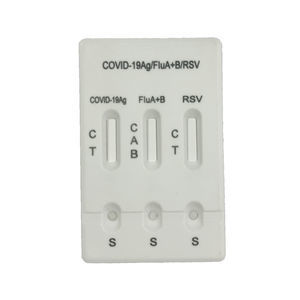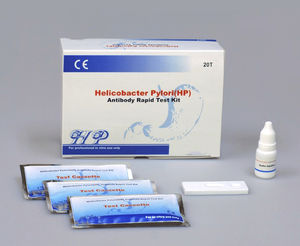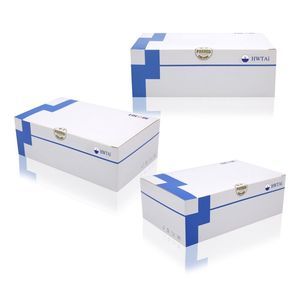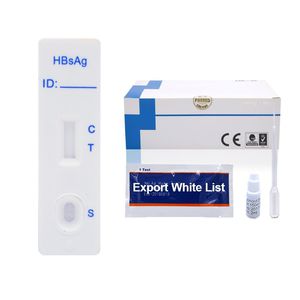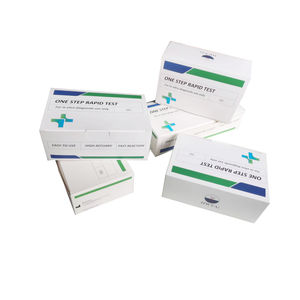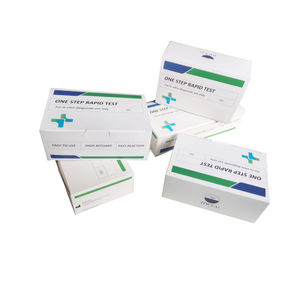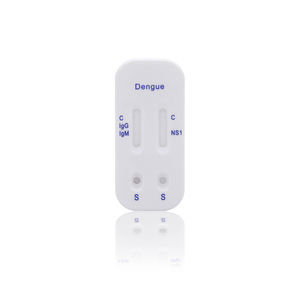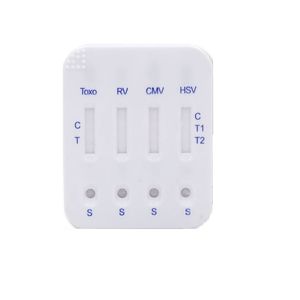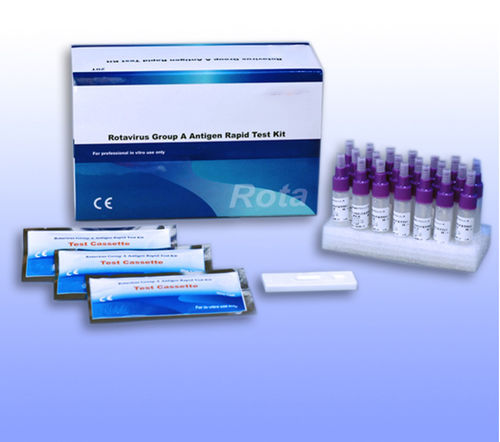
- Company
- Products
- Catalogs
- News & Trends
- Exhibitions
Rapid gastrointestinal infection test IRO-602for antigensrotavirusstool

Add to favorites
Compare this product
Characteristics
- Applications
- for gastrointestinal infections
- Tested parameter
- for antigens
- Micro-organism
- rotavirus
- Sample type
- stool
- Analysis mode
- immunochromatographic
Description
Immunochromatographic rapid assay for the Detection of Rotavirus Antigens in
Human Stool Specimens The test results are intended to aid in the diagnosis of rotavirus infection and to monitor the effectiveness of therapeutic treatment.
Explain :
Immunochromatographic rapid assay for the Detection of Rotavirus Antigens in
Human Stool Specimens The test results are intended to aid in the diagnosis of rotavirus infection and to monitor the effectiveness of therapeutic treatment.
【TEST PRINCIPLE】
The test is a sandwich solid phase immunochromatographic assay. To perform the test, an aliquot of diluted stool sample is added to the sample well of the test card. The sample flows through a label pad containing rotavirus antibody coupled to red-colored colloidal gold. If the sample contains rotavirus antigens, the antigen will bind to the antibody coated on the colloidal gold particles to form antigen-antibody-gold complexes. These complexes move on the nitrocellulose membrane by capillary action toward the test line area on which rotavirus specific antibodies are immobilized. As the complexes reach the test line, they will bind to the antibody on the membrane in the form of a line. A second red control line will always appear in the result window to indicate that the test has been correctly performed and the test device functions properly. If rotavirus antigen is not present or lower than the detection limit of the test, only the control line will be visible. If the control line has not developed, the test is invalid.
VIDEO
Catalogs
No catalogs are available for this product.
See all of HWTAi‘s catalogsRelated Searches
- Assay kit
- Blood assay kit
- Serum assay kit
- Immunoassay assay kit
- Plasma assay kit
- Infectious disease detection kit
- Blood rapid diagnostic test
- Rapid lateral flow test
- Immunoassay rapid diagnostic test
- Molecular test kit
- Cassette rapid diagnostic test
- Rapid virus test
- Whole blood detection kit
- Respiratory infection test kit
- Serum rapid diagnostic test
- Plasma rapid diagnostic test
- Clinical assay kit
- Infectious disease rapid diagnostic test
- Whole blood rapid diagnostic test
- Cassette assay kit
*Prices are pre-tax. They exclude delivery charges and customs duties and do not include additional charges for installation or activation options. Prices are indicative only and may vary by country, with changes to the cost of raw materials and exchange rates.


